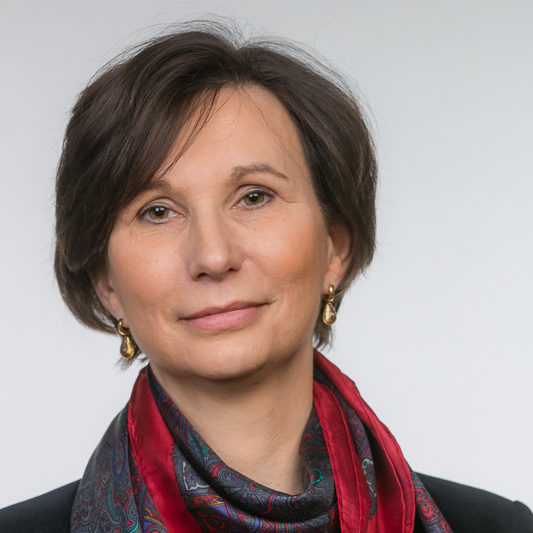During the Covid lockdown years (2020-2022), the mortgage market hit new records as people adopted new flexible lifestyles, seeking to divide their time between cities and the countryside, and this increased second-home ownership. In 2023, the rapid rise in interest rates caused a contraction in the broad mortgage market, and the shockwave spread to the second-home market: BNP Paribas Fortis saw transactions for this kind of property fall 36% compared with 2022. In addition, the average amount borrowed to buy a second home fell for the first time in five years, from €236,700 in 2022 to €219,700 in 2023.
Despite those declines, second homes still account for one in four mortgage applications at BNP Paribas Fortis. The result is that the number of Belgians owning more than one home is at an all-time high of 1.15 million[1], 10% of the population. The number is increasing yearly: in 2023, it was 7% higher than in 2022 and 16% higher than in 2019.
“Buying an additional property is often a major milestone for a person, whether they are seeking to improve their well-being or build their property portfolio,” says Laurent Loncke, Head of Retail Banking at BNP Paribas Fortis. “How they do it is just as important as what, where and when they buy. Many clients wonder whether buying a second home is right for them. It’s an investment with pros and cons, which should be looked at to better understand the issues involved. As a trusted financial partner for our clients, we have real-estate experts and financial advisors who can support them with advice regarding financing, taxation and inheritance issues so they can make the best decisions.”
Belgians like to buy locally
In 2023, 93% of Belgians bought a second home in Belgium. That proportion is the same as in 2022, and proximity is the main reason it is so high. For people buying a second home, Belgium has three advantages: they can use the property more regularly, it is easier to manage if rented out, and it is easier to obtain a mortgage from their usual bank.
Currently 931,000 Belgians have at least one second home in Belgium (up 7% on 2022)[2]. In 2023, most second-home transactions were in Flanders (54%), followed by Wallonia (31%) and Brussels (15%). Most of the mortgages granted were used to buy a house (68%), a much higher proportion than apartments (28%).
Another key fact is that two-thirds of second homes (66%) in Belgium and financed by BNP Paribas Fortis are purchased as rental properties. That proportion has been steadily rising in recent years: 56% in 2019, 60% in 2020, 62% in 2021, and 65% in 2022. This shows that bricks and mortar are increasingly used as a safe haven for investors looking for an income.
This trend, in which most borrowers are investors, is even stronger in Belgium’s main university towns. In Liège, 67% of second homes bought with a mortgage are intended to be let out. In Flanders, the proportion rises to 68% in Ghent and 71% in Leuven. But the highest proportion is in Brussels (77%) and Mons, where 81% of second homes bought with a mortgage are intended for rental. Louvain-la-Neuve is the only exception among the main university towns, with a proportion of 62%, just below the average.
The Ardennes region[3] also has a large percentage of second homes bought with a mortgage as rental properties (61%). Although the number of second homes purchased in the region followed the downward trend last year (falling 37% compared with 2022), it accounted for 4.5% of second homes purchased in Belgium via BNP Paribas Fortis in 2023. Bastogne (10%), Verviers (9%) and Spa (4.5%) are the most popular towns in the region.
The Belgian coast[4] is the other hotspot for second-home buyers. Although demand fell sharply in 2023 (down 42%), 7% of second-home purchases were on the coast. The most popular locations are Ostende (18%), Knokke (7%) and Bruges (6%).
“If the buyer does not have enough savings to buy a property outright, second-home purchases by our clients usually involve a new mortgage or the withdrawal of equity from an existing mortgage with a Belgian bank,” says Marc Delforge, Head of Mortgage Lending at BNP Paribas Fortis. “Borrowing money is a logical decision that often allows them to reduce their tax bills. And if a client is buying a second home abroad, they can take out a mortgage secured on their home in Belgium, and in some circumstances an interest-only loan.”
A growing number of Belgians living abroad due to the rise of remote working
An increasing number of Belgians are seeking a more exotic lifestyle, with 221,679 having purchased a second home abroad at at 11 June 2024 (up 10% compared with June 2023)[5]. This phenomenon seems to be driven by the younger generation. Since the pandemic, the average age of second-home buyers has fallen significantly. Although most second homes are still owned by people over 60, a younger cohort of buyers is also starting to take an interest in them. This is due to lifestyle changes, particularly the rise of remote working. Thirty- and forty-somethings are increasingly entering the market, which has long been the preserve of older buyers. The trend was confirmed in 2023: one buyer in seven was aged under 40, and people under 45 accounted for 30% of transactions in Spain last year (up from 20% in 2022).
Spain, with its warm climate that remains comfortable all year round and around 310 days of sun per year, endless beaches, relative proximity to Belgium and affordable properties, remains the number one location for Belgians buying abroad (41% of transactions in 2023). France remains a safe bet for Belgian second-home buyers, accounting for 37% of transactions in 2023, well ahead of Italy in third place (8%). The top three was the same in 2022.
However, unlike people buying second homes in Belgium, those buying them abroad usually do so for their own use. Only 14% of foreign properties are bought to generate rental income (the same proportion as in 2022). Among homes bought as rental properties, France is the most popular location, ahead of Spain:
Top 4 countries for second homes abroad (2023) |
||
|
|
PERSONAL USE |
RENTAL |
|
1. |
Spain (40%) |
France (39%) |
|
2. |
France (35%) |
Spain (36%) |
|
3. |
Italy (7%) |
Netherlands (14%) |
|
4. |
Netherlands (5%) |
Italy (9%) |
“France has some advantages for Belgian buyers when buying or passing on a property,” explains Thierry Badot, Lending Manager at BNP Paribas Fortis. “Notary fees, stamp duty and VAT on newbuild properties are lower than in Belgium. However, under France’s Climate and Resilience Act, landlords of properties with low energy performance ratings (F and G) have been unable to increase the rent since 1 January 2023. It will be forbidden to let out a home with an energy performance rating of G in 2025, F in 2028 and E in 2034.”
Buyers of second homes abroad borrowed €197,600 on average in 2023, down from €265,700 in 2022. However, the figures vary widely. The average amount borrowed to buy a rental property in France was €315,000, up from €212,000 in 2022. Buyers in Spain borrowed less, with an average of €222,000 in 2023 versus €235,000 in 2022. In third place is the Netherlands, with buyers of rental properties borrowing €178,000 (€180,000 in 2022).
People buying a second home for their own use seem to pay a larger deposit, with average amounts borrowed being much lower: €162,000 in France (€214,000 in 2022), €133,000 in Italy (€136,000 in 2022) and €132,000 in Spain (€174,000 in 2022).
Climate change: little impact
Spain, France, Italy, Greece and the wider Mediterranean region are the most popular locations for Belgians looking for a second home abroad. However, in recent years, these regions have also suffered a higher incidence of droughts, heatwaves, coastal erosion, forest fires and floods. So, is climate change now influencing the preferred locations of Belgian second-home buyers?
The data from 2019 to 2023 shows that certain regions less exposed to extreme weather phenomena seem to be faring well, such as Eastern France, but the effect remains marginal. The figures suggest that climate issues are not part of buyers’ selection criteria, at least not yet. This is shown by the Provence-Alpes-Côte d’Azur region, which accounted for 25% of mortgage applications in France in 2023 (up from 22% in 2019), and the Andalucia and Valencia regions, which respectively made up one in four applications (up from 17% in 2019) and one in two applications (the same as in 2019) in Spain in 2023.
[1] Source: number of second homes disclosed to the Belgian federal finance department.
[2] Source: number of second homes in Belgium disclosed to the Belgian federal finance department.
[3] Including the 56 towns partially or entirely located in the Ardennes region.
[4] 10 seaside towns: Blankenberge, Bredene, Le Coq, La Panne, Knokke-Heist, Coxyde, Middelkerke, Nieuport, Ostende, Zeebrugge.
[5] Source: number of second homes disclosed to the Belgian federal finance department.


